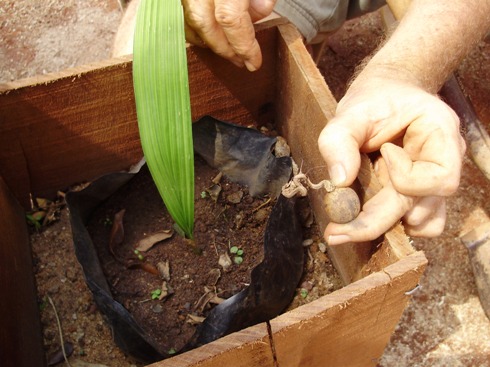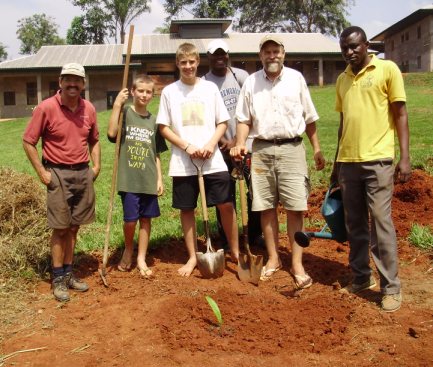
Something of historical agricultural significance happened at RFIS today, and only a handful of us were present to witness or participate in it.
A plam tree was planted on the campus, but not just any palm tree; a Talipot Palm. What’s so great about a Talipot Palm? It is rare. After all, have you ever heard of it before? I didn’t think so.
The Talipot Palm is possibly the largest plam tree in the world. It is extinct in the wild, and is only found in botanical gardens or personal collections. It only flowers one time in its 30 to 70 year life, and then it dies. The flower is also the largest in the world.


Ron saved the workers a couple days worth of digging by bringing out the backhoe. He removed the grass at the roots so it can be planted somewhere else on the campus. Pictured above, observing Ron’s work is Paul, RFIS director Lois Crosley, an RFIS student and Didier the gardner.

Once the hole was dug, they brought over hand picked mulch to put into the hole. Then they planted the very valuable palm into the hole, and filled it in with dirt and mulch.
Passersby asked why on earth such a huge circle was cut out for such a small and non impressive looking “leaf”. The reason to cut such a big area is to protect it from lawn cutters who might otherwise not notice it and mow it down; and to protect it from being choked out by the thick grasses.
A couple of students, Ben and Lyle, had free time this morning and were there to help and learn. I told them that now they can look out the window of their classroom and be encouraged by the newly planted palm. It only looks like a little leaf right now, but with hard work, perserverence, water and sunshine, it will grow to greatness. And they too, with hard work, perserverence, a little water and sunshine, may grow to greatness.

Oh, and noting that Ben and Lyle were probably the only ones present today who will live to see it flower, we reminded them to be sure and collect the seeds after this flowers so they can assure that another is planted in its place.

